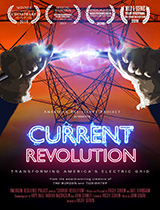
Current Revolution: Transforming America's Electric Grid 2018
Distributed by Green Planet Films, PO Box 247, Corte Madera, CA 94976-0247; 415-377-5471
Produced by Roger Sorkin and Nate Birnbaum
Directed by Roger Sorkin and Nate Birnbaum
Streaming, 37 mins
College - General Adult
Economics, Engineering, Environmentalism
Date Entered: 05/22/2020
Reviewed by Kristen Adams, Science & Engineering Librarian, Miami University LibrariesCurrent Revolution episode one, The Transformation Cannot Be Stopped covers a wide range of topics focusing on the positive aspects of renewable energy in general, and more specifically, solar, electric vehicles and battery storage. Lacking is discussion on drawbacks, such as solar unsuitability for all regions due to limited sunlight, and the mining for materials used to construct the solar panels. This episode features individuals from government, military, industry, and homeowner associations. The emphasis is on the perspectives and philosophies of these different groups and individuals within them, towards renewable energy and being independent from the U.S. electric grid. The history of the grid system is covered, explaining how it came to its current state, and potential future adaptations. The geographic coverage is the United States, particularly Arizona, Georgia, and Puerto Rico.
The film touches on a lot of topics surrounding renewable energy, including electric cars, public utilities, batteries/energy storage, grid collapse, natural disasters, and utility costs to consumers. This makes the film quite versatile for classroom use as it provides numerous conversation points and is suitable to several disciplines. Subject areas that might find this interesting are environmental studies, geography, urban planning, politics, business, electrical engineering, and civil engineering.
While produced in 2018 and up to date for the time, rapid advances with renewable energy means educational materials, like this, have the potential to quickly become outdated. The English subtitles are very good; they kept pace with the speech and included other sounds and music descriptions. The film is only 37 minutes long, which is ideal for classroom viewing, leaving time for discussion.